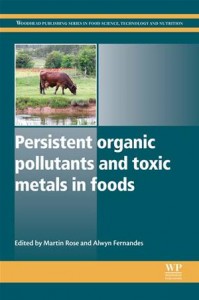Persistent organic pollutants (POPs) and toxic elements, such as dioxins, flame retardants, lead and mercury, are substances of major concern for the food industry, the regulator and the public. They persist in the environment, accumulate in food chains and may adversely affect human health if ingested over certain levels or with prolonged exposure. Persistent organic pollutants and toxic metals in foods explores the scientific and regulatory challenges of ensuring that our food is safe to eat.Part one provides an overview of regulatory efforts to screen, monitor and control persistent organic pollutants and heavy metals in foods and includes case studies detailing regulatory responses to food contamination incidents. Part two moves on to highlight particular POPs, toxic metals and metalloids in foods, including dioxins and polychlorinated biphenyls (PCBs), mercury, polycyclic aromatic hydrocarbons (PAHs) and phthalates.Persistent organic pollutants and toxic metals in foods is a standard reference for those in the food industry responsible for food safety, laboratories testing for food chemical safety, regulatory authorities responsible for ensuring the safety of food, and researchers in industry and academia interested in the science supporting food chemical safety.Includes case studies which detail regulatory responses to food contamination incidentsConsiders the uptake and transfer of persistent organic pollutants in the food chain and the risk assessment of contaminates in foodDetails perticular persistent organic pollutants, toxic metals and metalloids in foods including polychlorinated biphenyls (PCBs), per- and polyfluoroalkyl substances (PFASs), mercury and arsenic among others
Persistent organic pollutants and toxic metals
Sobre
Talvez você seja redirecionado para outro site












